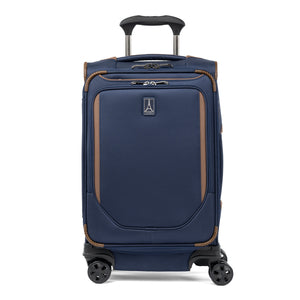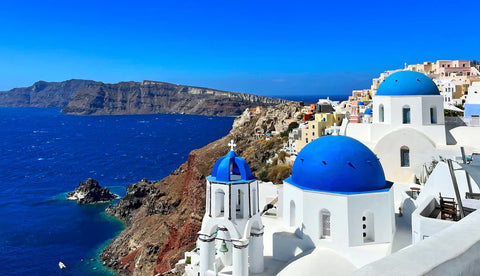In the 1st century BCE, the Romans conquered a small Gallic village and renamed it Lutetia. By the 4th century CE the village had grown into a prosperous city, and the name changed to Paris. Today, Paris is one of the most popular tourist attractions in Europe. The world knows it as the City of Love, but the Parisians call their home La Ville Lumière: The City of Lights.
This Paris travel guide will help you make the most of your trip to La Ville Lumière, especially if you’re new to travelling. You’ll learn which airports serve Paris, how to get around the city, and what to visit in Paris from the Cathedral of Notre Dame to the city's best shopping districts.
Currency
As part of the European Union, Paris uses the Euro, which on average has an exchange rate of $1.05. Cash, card, and mobile payments are all accepted, and you can use international credit cards to withdraw Euros from any bank’s automatic cash machine.
If you need to exchange your home country’s currency for Euros, you can find exchange bureaus in most tourist areas. Most exchange bureaus are open seven days a week.
Time Zone
Paris is in the Central European Standard Time zone (GMT+1). For comparison, 12.00 pm in Paris is 6.00 am in New York.
When to Visit Paris
Spring and summer are the most popular times for trips to Paris. The weather at these times is warm, and the Parisian parks are at their most beautiful. If you prefer to avoid crowds, however, consider August. August sees fewer tourists and fewer Parisians, as most locals take their holidays in August. This means some restaurants and shops may be closed for business, but you’ll be able to explore a quieter version of the city.
Winter in Paris is generally overcast, with heavier rain and temperatures ranging from 33F to 44F. However, you can still find plenty to do, especially if your tastes run towards museums and art galleries — just pack with the weather in mind.
Airport Options
Three airports serve Paris: Charles de Gaulle to the northeast, Orly To the south, and Beauvais to the north.
Charles de Gaulle Airport (CDG)
Charles de Gaulle Airport is the largest international airport in France and the primary airport serving Paris. Located 23 km (14 miles) northeast of Paris, the airport offers direct flights to 267 destinations in 106 countries. Charles de Gaulle has three terminals connected by the CDGVAL light rail system.
Trains are the cheapest and fastest way to get to Paris from Charles de Gaulle Airport. RER express trains run daily from the airport to Paris’ main stations. Trains run every ten minutes from 4:53 a.m. to 11:50 p.m.
The train may be your best choice if you’re travelling with only carry-on luggage. Train travel can be inconvenient if you have largerchecked luggage. Taxis, private transfers, shared van shuttles, and Uber are all available.
Orly Airport (ORY)
Orly Airport lies 13 km (8 miles) south of Paris. The two-terminal airport is smaller than Charles de Gaulle but also less crowded. If your accommodations are in the south of Paris, Orly is an option, although the airport has fewer direct flights.
Orly does not have direct train lines to Paris’ city center. To get to Paris by train, you would take the Orlyval metro to Anthony Train Station, then change to either line RER B or RER C. Taxis offer faster travel time but are expensive. If you're on a budget and only have a carry-on, a 45-minute bus ride will get you from Orly to Paris.
Beauvais Airport (BVA)
Your third airport option, Beauvais Airport, is 80km (55 miles) north of Paris. The airport sees most of its traffic from budget airlines such as Ryanair and handles approximately fifty daily flights.
You can get to Paris from Beauvais using the airport’s paying shuttle service, which leaves about 20 minutes after each flight's arrival. You can purchase shuttle tickets in the arrival lounge, outside the passenger terminal, or online. Taxis are also available, but a 55-mile fare will be expensive.
What to Visit in Paris
1. The Eiffel Tower
The Eiffel Tower dominates the Parisian skyline. From the top, you can see all of Paris, a not-to-be-missed view. At night, 336 yellow-orange spotlights light up the tower for a stunning display.
Paris is divided into districts called arrondissements. The Eiffel Tower is in the 7th Arrondissement, on the Champs de Mars.

2. The Louvre
Located on the Rue de Rivoli, the Louvre is the world’s largest art museum and home to the enigmatic Mona Lisa. We recommend booking your admission tickets well in advance, as tickets may not be available if you just show up.

3. The Palace of Versailles
Located just outside of Paris in the city of Versailles, the Palace of Versailles was home to a long list of French monarchs ending with King Louis XVI and his wife, Marie Antoinette. Stroll the grounds and explore the exhibitions, or take a guided tour to areas closed to other visitors.

4. Notre Dame Cathedral
Since a devastating fire in 2019, access to the interior of Notre Dame Cathedral is sadly not an option, but you can take a guided tour around the exterior of the cathedral and admire the exceptional Gothic architecture.

5. Go shopping
From the century-old Art Nouveau Galeries Lafayette Haussmann to boutique clothing stores and the antique dealers of the 5th Arrondissement, Paris offers a fertile hunting ground for all types of shopping.

6. The Paris Catacombs
For an unforgettable, distinctly Parisian journey into the macabre, take a tour of the Catacombs of Paris, a connection of underground caverns, quarries, and passageways home to millions of the city’s dead. Tours take you as deep as 65 feet below the streets of Paris and, while not for everyone, provide a unique insight into the city’s history.

7. Eat at a Latin Quarter Cafe
Close to Notre Dame Cathedral, Paris’ Latin Quarter is a maze of narrow, winding streets and open-air cafes. Home to the Saint-Chapelle Church, the Latin Quarter includes bars and intimate jazz clubs.

How to get around Paris
Renting a car in Paris is not recommended. Traffic can be brutal, and even Parisians hate driving there (There’s a popular myth that a tourist got trapped in the inside lane of the 12-lane Arc de Triomphe roundabout and ran out of fuel before he could get back out). Instead, consider these alternatives to car rentals:
- The Paris Metro and RER trains are the best ways to travel within the city. A one-way trip costs about $2.00, or you can buy single or multi-day passes.
- The Paris bus service is excellent, with single journeys usually costing about $2.00.
- Taxis and Uber are both available but more expensive than other public transport options.
- Bike-sharing programs allow you to cycle through the City of Lights, and several e-scooter rental companies also offer a convenient way to see the city from the street (be careful when using either in Paris’ notorious traffic).
We hope this Paris travel guide has inspired you to visit this amazing city. We’ve only touched on what to visit in Paris and what to do there. Just remember: once you visit La Ville Lumièr, you’ll never be quite the same!
Looking for more travel inspiration? Check out our Travel Spotlight.





